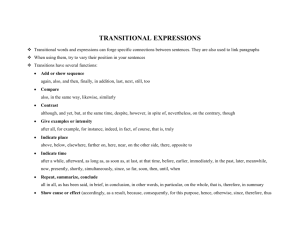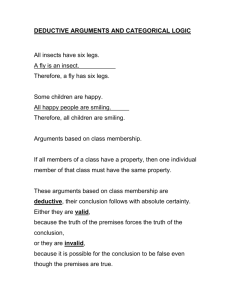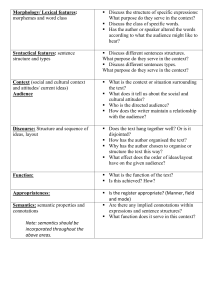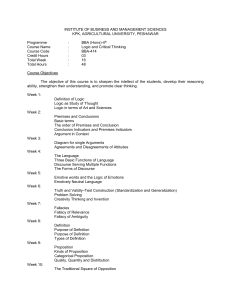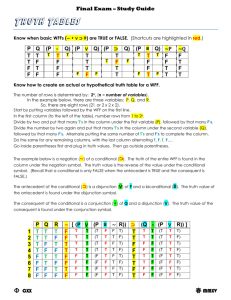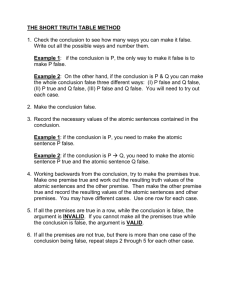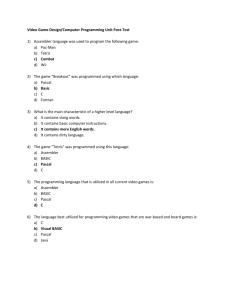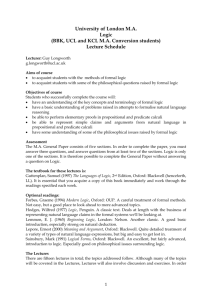Elements of Logic Lecture #10 : Formalization
advertisement
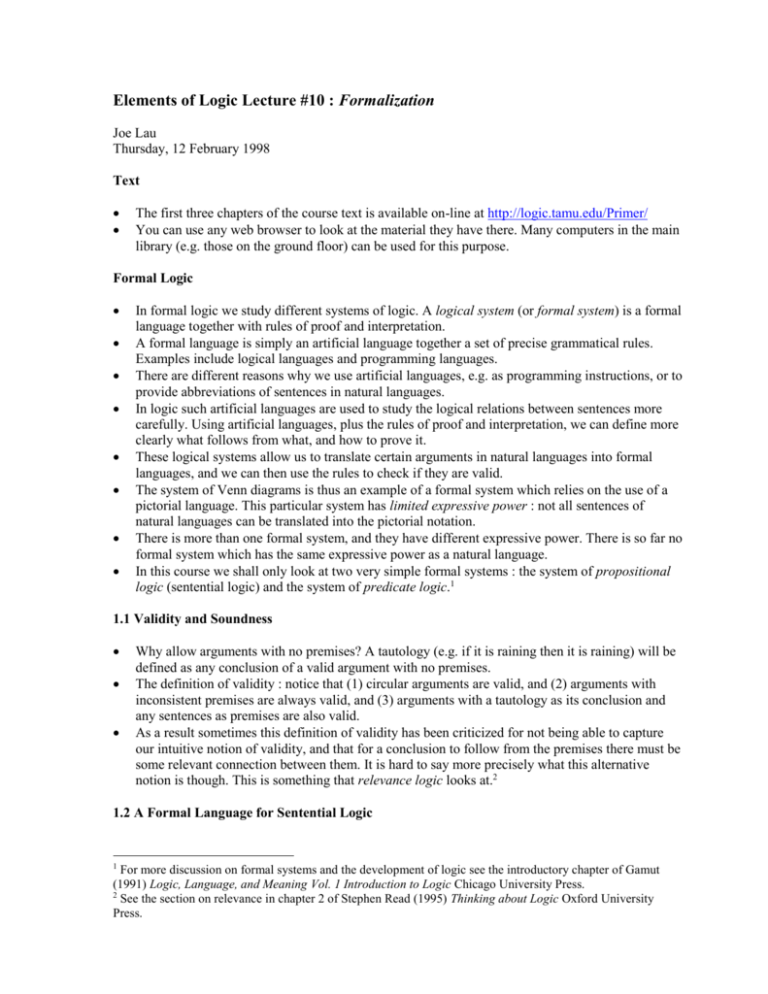
Elements of Logic Lecture #10 : Formalization Joe Lau Thursday, 12 February 1998 Text The first three chapters of the course text is available on-line at http://logic.tamu.edu/Primer/ You can use any web browser to look at the material they have there. Many computers in the main library (e.g. those on the ground floor) can be used for this purpose. Formal Logic In formal logic we study different systems of logic. A logical system (or formal system) is a formal language together with rules of proof and interpretation. A formal language is simply an artificial language together a set of precise grammatical rules. Examples include logical languages and programming languages. There are different reasons why we use artificial languages, e.g. as programming instructions, or to provide abbreviations of sentences in natural languages. In logic such artificial languages are used to study the logical relations between sentences more carefully. Using artificial languages, plus the rules of proof and interpretation, we can define more clearly what follows from what, and how to prove it. These logical systems allow us to translate certain arguments in natural languages into formal languages, and we can then use the rules to check if they are valid. The system of Venn diagrams is thus an example of a formal system which relies on the use of a pictorial language. This particular system has limited expressive power : not all sentences of natural languages can be translated into the pictorial notation. There is more than one formal system, and they have different expressive power. There is so far no formal system which has the same expressive power as a natural language. In this course we shall only look at two very simple formal systems : the system of propositional logic (sentential logic) and the system of predicate logic.1 1.1 Validity and Soundness Why allow arguments with no premises? A tautology (e.g. if it is raining then it is raining) will be defined as any conclusion of a valid argument with no premises. The definition of validity : notice that (1) circular arguments are valid, and (2) arguments with inconsistent premises are always valid, and (3) arguments with a tautology as its conclusion and any sentences as premises are also valid. As a result sometimes this definition of validity has been criticized for not being able to capture our intuitive notion of validity, and that for a conclusion to follow from the premises there must be some relevant connection between them. It is hard to say more precisely what this alternative notion is though. This is something that relevance logic looks at.2 1.2 A Formal Language for Sentential Logic 1 For more discussion on formal systems and the development of logic see the introductory chapter of Gamut (1991) Logic, Language, and Meaning Vol. 1 Introduction to Logic Chicago University Press. 2 See the section on relevance in chapter 2 of Stephen Read (1995) Thinking about Logic Oxford University Press. A formal language is given by a vocabulary of primitive expressions and rules of formation for complex well-formed formula from the primitive expressions. Meta-variables are not part of the formal language but they are used to talk about arbitrary expressions. The rules defining the class of WFFs are recursive. The definition of the concept uses the concept itself, in that whether something is a WFF depends on whether certain other expressions are WFFs. Recursive definitions need not be circular.3 Brackets are used to avoid ambiguity, but sometimes they can be dropped. Binding conventions can also help to remove ambiguity. But the simplified expressions need not be WFFs. 1.3 Translation of English to Sentential WFFs In translating sentences of natural languages into the language of sentential logic we try to discern as much structure as possible. So “snow is white and grass is green” is paired with “P&Q” instead of just “P”. This process is also known as formalization. In formalization one should always say explicitly which sentence letter is paired with which sentence is natural language. Exercises 3 The authors of the course text have provided exercises at a web site : http://logic.tamu.edu/cgibin/quizmaster For your homework, you have to show to your tutorials that you have done some of these exercises by printing out your results or saving them to a disk. Over the weekend I shall put up the details on the course web site. Consider this recursive definition of integer multiplication in terms of addition and subtraction : x.y = x if y=1, and x.y = x + x.(y-1) if y>1.
